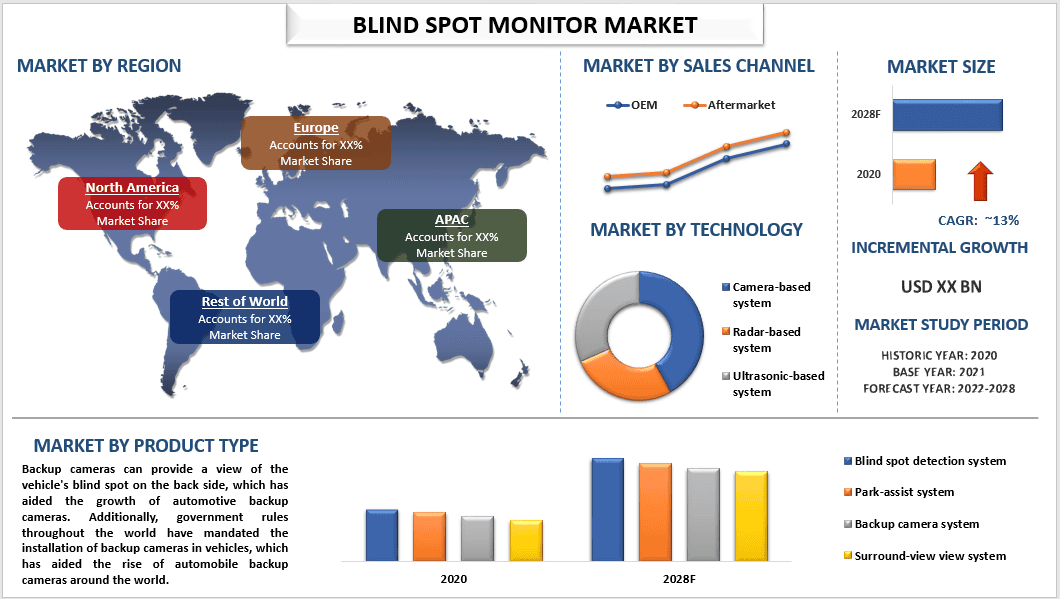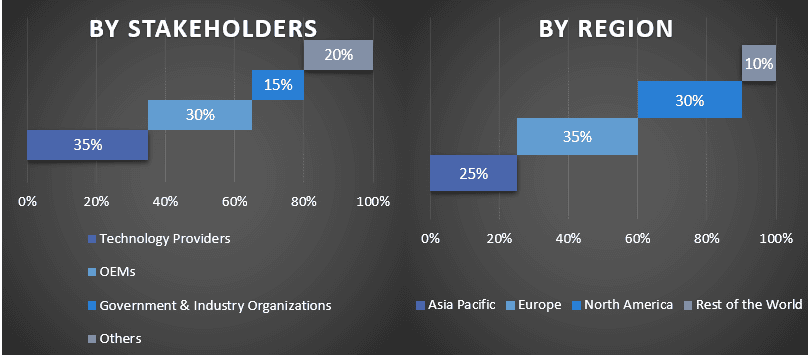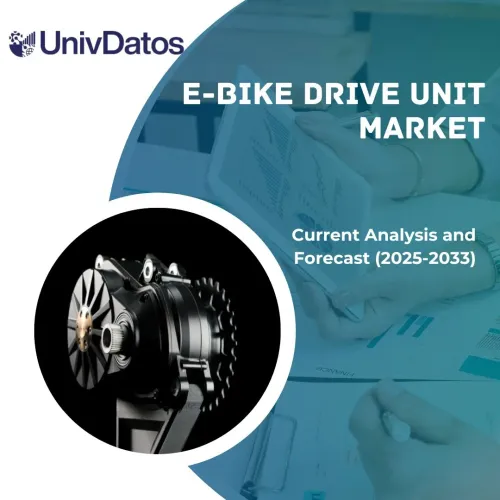- Startseite
- Über uns
- Industrie
- Dienstleistungen
- Lesen
- Kontaktieren Sie uns
Markt für Totwinkel-Assistenten: Aktuelle Analyse und Prognose (2022-2028)
Schwerpunkt auf Technologie (kamerabasiertes System, radarbasiertes System und ultraschallbasiertes System); Produkttyp (Totwinkel-Erkennungssystem, Einparkhilfe-System, Rückfahrkamera-System und Surround-View-System); Vertriebskanal (OEMs und Aftermarket); Region/Land

Es wird erwartet, dass der Markt für Blind Spot Monitore im Zeitraum von 2022 bis 2028 eine CAGR von rund 13 % verzeichnen wird. Dies ist hauptsächlich auf die zunehmende Einführung strenger staatlicher Programme zur Fahrzeugsicherheit in Verbindung mit der Verbrauchernachfrage nach aktiven Sicherheitssystemen zurückzuführen. Fahrzeugsicherheitssysteme, Radare in Verbindung mit Kameras, Infrarot und andere Technologien werden verwendet, um Informationen über die Fahrzeuge in ihrer Umgebung zu erhalten. Mit diesen Informationen können diese Systeme eine Fahrsituation bestimmen und den Fahrer vor einem potenziell gefährlichen Ereignis warnen. Es kann das Fahrzeug auch selbstständig steuern und den Schweregrad des Unfalls verringern.
Darüber hinaus konzentrieren sich die wichtigsten Akteure auf dem Markt kontinuierlich auf strategische Maßnahmen wie Partnerschaften und Kooperationen sowie auf die Einführung neuer Produkte. So hat SerVision von der ADI Systems Group im Jahr 2021 ein neues System zur Erkennung toter Winkel für Fahrer auf den Markt gebracht – das Baware BSD-System. Das Baware BSD-System basiert auf Radartechnologie, die den Fahrer benachrichtigt, wenn ein Fahrzeug oder Objekt von der Rückseite des Fahrzeugs auftaucht.
Zu den wichtigsten Akteuren auf dem Markt gehören Robert Bosch GmbH, Continental AG, DENSO Corporation, Valeo SE, Aptiv PLC, Magna International Inc., Autoliv Inc., Hyundai Mobis Co. Ltd., ZF Friedrichshafen AG und Hella KGaA Hueck & Co.
Im Bericht dargestellte Erkenntnisse
„Unter den Produkttypen wird erwartet, dass die Kategorie der Rückfahrkamerasysteme im Prognosezeitraum einen bedeutenden Anteil halten wird“
Basierend auf dem Produkttyp ist der Markt in Blind Spot Detection System, Park-Assist System, Backup Camera System und Surround-View View System unterteilt. Das Segment der Rückfahrkamerasysteme hielt im Jahr 2020 einen bedeutenden Marktanteil. Um Kollisionen und Unfälle zu vermeiden, die durch schlechte Sicht beim Einparken des Autos verursacht werden, werden in Autos Rückfahrkameras eingesetzt, um ein klares Bild von der Rückseite des Fahrzeugs aufzunehmen. Unfälle können durch die Verwendung einer Rückfahrkamera vermieden werden, indem der tote Winkel auf der Rückseite erkannt wird. Der Markt expandiert aufgrund von Faktoren wie der Zunahme von Unfällen, die zu einer stärkeren Nutzung von Rückfahrkameras geführt hat, verbunden mit der Integration fortschrittlicher Systeme wie der Überwachung des toten Winkels durch OEMs in Fahrzeugen, um den Kundenbedenken hinsichtlich Sicherheit Rechnung zu tragen.
„Unter den Vertriebskanälen wird erwartet, dass die Kategorie OEMs im Prognosezeitraum ein deutliches Wachstum verzeichnen wird“
Basierend auf dem Vertriebskanal ist der Markt für Blind Spot Monitore in OEM und Aftermarket unterteilt. Es wird erwartet, dass das OEM-Segment im Prognosezeitraum das höchste Wachstum verzeichnen wird. Blind-Spot-Überwachungssysteme bieten eine 360°-Abdeckung des Fahrzeugs. Das System warnt den Fahrer vor sich nähernden Fahrzeugen, die sich im toten Winkel des Fahrzeugs befinden, der außerhalb des Sichtfelds des Fahrers liegt. Diese Technologie hat Automobilhersteller erheblich dazu ermutigt, Fahrzeuge herzustellen, die die bundesstaatlichen Mindestsicherheitsanforderungen übertreffen, wodurch die Akzeptanz eines aktiven Sicherheitssystems wie eines Blind-Spot-Überwachungssystems durch Automobilhersteller in Fahrzeugen erhöht wird.
„Nordamerika wird einen bedeutenden Anteil am Markt halten“
Nordamerika sicherte sich im Jahr 2020 den größten Marktanteil des globalen Marktes, und es wird erwartet, dass er im Prognosezeitraum mit einer beträchtlichen CAGR wachsen wird, was auf die wachsende erwerbstätige Bevölkerung und die expandierende Mittelschicht zurückzuführen ist, wodurch die Nachfrage nach fortschrittlichen automobilen Sicherheitssystemen, einschließlich Blind-Spot-Monitoren, steigt.
Darüber hinaus aufgrund der zunehmend strengen staatlichen Vorschriften in Bezug auf Straßen- und Fahrzeugsicherheit und der Sensibilisierung der Endverbraucher für fortschrittliche Sicherheitsmerkmale. Die USA haben immer den First-Mover-Vorteil, wenn es um die Einführung innovativer Technologien geht. Die von den verschiedenen nordamerikanischen Ländern erlassenen staatlichen Vorschriften haben die Integration fortschrittlicher Sicherheitsmerkmale in Fahrzeuge für die Verkehrssicherheit vorgeschrieben. Beispielsweise wurde die Regulierungsbehörde National Highway Traffic Safety Administration (NHTSA) in den USA für die Sicherheit von Kraftfahrzeugen gegründet.
Ebenso müssen gemäß Transport Canada seit dem 1. Mai 2018 alle Neuwagen, die in Kanada verkauft werden und 4.536 kg oder weniger wiegen, mit einer Rückfahrkamera ausgestattet sein.
Gründe für den Kauf dieses Berichts:
- Die Studie umfasst eine Analyse der Marktgröße und -prognose, die von authentifizierten wichtigen Branchenexperten validiert wurde.
- Der Bericht bietet einen schnellen Überblick über die Gesamtleistung der Branche auf einen Blick.
- Der Bericht enthält eine eingehende Analyse der wichtigsten Branchenkollegen mit einem primären Fokus auf wichtige Geschäftskennzahlen, Produktportfolio, Expansionsstrategien und aktuelle Entwicklungen.
- Detaillierte Untersuchung der Treiber, Beschränkungen, wichtigsten Trends und Chancen, die in der Branche vorherrschen.
- Die Studie deckt den Markt umfassend über verschiedene Segmente ab.
- Tiefgehende regionale Analyse der Branche.
Anpassungsoptionen:
Der globale Markt für Blind Spot Monitore kann je nach Bedarf oder einem anderen Marktsegment weiter angepasst werden. Darüber hinaus versteht UMI, dass Sie möglicherweise Ihre eigenen geschäftlichen Anforderungen haben. Nehmen Sie daher Kontakt mit uns auf, um einen Bericht zu erhalten, der Ihren Anforderungen vollständig entspricht.
Inhaltsverzeichnis
Forschungsmethodik für die Marktanalyse von Totwinkel-Assistenten (2022-2028)
Die Analyse des historischen Marktes, die Schätzung des aktuellen Marktes und die Prognose des zukünftigen Marktes für den globalen Markt für Totwinkel-Assistenten waren die drei Hauptschritte, die unternommen wurden, um die Einführung von Totwinkel-Assistenten in wichtigen Regionen weltweit zu erstellen und zu analysieren. Es wurden umfassende Sekundärrecherchen durchgeführt, um die historischen Marktzahlen zu erfassen und die aktuelle Marktgröße zu schätzen. Zweitens wurden zahlreiche Erkenntnisse und Annahmen berücksichtigt, um diese Erkenntnisse zu validieren. Darüber hinaus wurden umfassende Primärinterviews mit Branchenexperten entlang der Wertschöpfungskette des globalen Marktes für Totwinkel-Assistenten geführt. Nach der Annahme und Validierung der Marktzahlen durch Primärinterviews verwendeten wir einen Top-Down-/Bottom-Up-Ansatz, um die vollständige Marktgröße zu prognostizieren. Danach wurden Marktaufschlüsselungs- und Datentriangulationsmethoden angewendet, um die Marktgröße von Segmenten und Untersegmenten der Branche zu schätzen und zu analysieren. Die detaillierte Methodik wird im Folgenden erläutert:
Analyse der historischen Marktgröße
Schritt 1: Eingehende Untersuchung von Sekundärquellen:
Es wurde eine detaillierte Sekundärstudie durchgeführt, um die historische Marktgröße des Marktes für Totwinkel-Assistenten aus internen Unternehmensquellen wie Jahresberichten und Finanzberichten, Performance-Präsentationen, Pressemitteilungen usw. sowie aus externen Quellen wie Fachzeitschriften, Nachrichten und Artikeln, Regierungsveröffentlichungen, Wettbewerbsveröffentlichungen, Sektorberichten, Datenbanken von Drittanbietern und anderen glaubwürdigen Veröffentlichungen zu erhalten.
Schritt 2: Marktsegmentierung:
Nachdem wir die historische Marktgröße des Marktes für Totwinkel-Assistenten erhalten hatten, führten wir eine detaillierte Sekundäranalyse durch, um historische Markteinblicke und Anteile für verschiedene Segmente und Untersegmente für wichtige Regionen zu sammeln. Die wichtigsten Segmente, die im Bericht enthalten sind, sind Technologie, Produkttyp und Vertriebskanal. Darüber hinaus wurden Länderanalysen durchgeführt, um die allgemeine Akzeptanz von Testmodellen in dieser Region zu bewerten.
Schritt 3: Faktorenanalyse:
Nachdem wir die historische Marktgröße verschiedener Segmente und Untersegmente erfasst hatten, führten wir eine detaillierte Faktorenanalyse durch, um die aktuelle Marktgröße des Marktes für Totwinkel-Assistenten zu schätzen. Darüber hinaus führten wir eine Faktorenanalyse unter Verwendung von abhängigen und unabhängigen Variablen durch, wie z. B. verschiedene Typen, Antriebsarten und Vertriebskanäle von Totwinkel-Assistenten. Eine gründliche Analyse wurde für Nachfrage- und Angebotsseitenszenarien unter Berücksichtigung von Top-Partnerschaften, Fusionen und Übernahmen, Geschäftsexpansionen und Produkteinführungen im Bereich des Marktes für Totwinkel-Assistenten auf der ganzen Welt durchgeführt.
Schätzung und Prognose der aktuellen Marktgröße
Aktuelle Marktgrößenbestimmung: Basierend auf den umsetzbaren Erkenntnissen aus den oben genannten 3 Schritten ermittelten wir die aktuelle Marktgröße, die wichtigsten Akteure auf dem globalen Markt für Totwinkel-Assistenten und die Marktanteile der Segmente. Alle erforderlichen prozentualen Anteile, Aufteilungen und Marktaufschlüsselungen wurden unter Verwendung des oben genannten sekundären Ansatzes ermittelt und durch Primärinterviews verifiziert.
Schätzung & Prognose: Für die Marktschätzung und -prognose wurden verschiedenen Faktoren Gewichte zugewiesen, darunter Treiber & Trends, Beschränkungen und Chancen, die den Stakeholdern zur Verfügung stehen. Nach der Analyse dieser Faktoren wurden relevante Prognosetechniken, d. h. der Top-Down-/Bottom-Up-Ansatz, angewendet, um die Marktprognose für 2028 für verschiedene Segmente und Untersegmente in den wichtigsten Märkten weltweit zu erstellen. Die Forschungsmethodik zur Schätzung der Marktgröße umfasst:
- Die Marktgröße der Branche in Bezug auf den Umsatz (USD) und die Akzeptanzrate des Marktes für Totwinkel-Assistenten in den wichtigsten Märkten im Inland
- Alle prozentualen Anteile, Aufteilungen und Aufschlüsselungen von Marktsegmenten und Untersegmenten
- Wichtige Akteure auf dem globalen Markt für Totwinkel-Assistenten in Bezug auf die angebotenen Produkte. Auch die Wachstumsstrategien, die diese Akteure anwenden, um in dem schnell wachsenden Markt zu konkurrieren
Validierung von Marktgröße und -anteil
Primärforschung: Es wurden eingehende Interviews mit den Key Opinion Leaders (KOLs) geführt, darunter Top Level Executives (CXO/VPs, Vertriebsleiter, Marketingleiter, Betriebsleiter, Regionalleiter, Länderleiter usw.) in wichtigen Regionen. Die Ergebnisse der Primärforschung wurden dann zusammengefasst und eine statistische Analyse durchgeführt, um die aufgestellte Hypothese zu beweisen. Die Ergebnisse der Primärforschung wurden mit den Sekundärergebnissen zusammengeführt, wodurch Informationen in umsetzbare Erkenntnisse umgewandelt wurden.
Aufteilung der Primärteilnehmer in verschiedenen Regionen

Market Engineering
Die Datentriangulationstechnik wurde verwendet, um die Gesamtmarktschätzung abzuschließen und präzise statistische Zahlen für jedes Segment und Untersegment des globalen Marktes für Totwinkel-Assistenten zu erhalten. Die Daten wurden in mehrere Segmente und Untersegmente aufgeteilt, nachdem verschiedene Parameter und Trends in den Bereichen Typ, Antriebsart und Vertriebskanal auf dem globalen Markt für Totwinkel-Assistenten untersucht wurden.
Das Hauptziel der Globalen Marktstudie für Totwinkel-Assistenten
Die aktuellen und zukünftigen Markttrends des globalen Marktes für Totwinkel-Assistenten wurden in der Studie genau bestimmt. Investoren können strategische Erkenntnisse gewinnen, um ihre Entscheidungen für Investitionen auf der Grundlage der in der Studie durchgeführten qualitativen und quantitativen Analyse zu treffen. Aktuelle und zukünftige Markttrends bestimmten die Gesamtattraktivität des Marktes auf regionaler Ebene und boten den industriellen Teilnehmern eine Plattform, um den unerschlossenen Markt zu nutzen und von einem First-Mover-Vorteil zu profitieren. Weitere quantitative Ziele der Studien sind:
- Analyse der aktuellen und prognostizierten Marktgröße des Marktes für Totwinkel-Assistenten in Bezug auf den Wert (USD). Analysieren Sie auch die aktuelle und prognostizierte Marktgröße verschiedener Segmente und Untersegmente
- Die Segmente der Studie umfassen die Bereiche Technologie, Produkttyp und Vertriebskanalanalyse des regulatorischen Rahmens für den Totwinkel-Assistenten
- Analyse der Wertschöpfungskette unter Einbeziehung verschiedener Intermediäre sowie Analyse des Kunden- und Wettbewerberverhaltens der Branche.
- Analyse der aktuellen und prognostizierten Marktgröße des Marktes für Totwinkel-Assistenten für die Hauptregion.
- Zu den wichtigsten Ländern der in dem Bericht untersuchten Regionen gehören der asiatisch-pazifische Raum, Europa, Nordamerika und der Rest der Welt.
- Unternehmensprofile des Marktes für Totwinkel-Assistenten und die Wachstumsstrategien, die von den Marktteilnehmern angewendet werden, um sich in dem schnell wachsenden Markt zu behaupten
- Eingehende regionale Analyse der Branche
Verwandt Berichte
Kunden, die diesen Artikel gekauft haben, kauften auch










